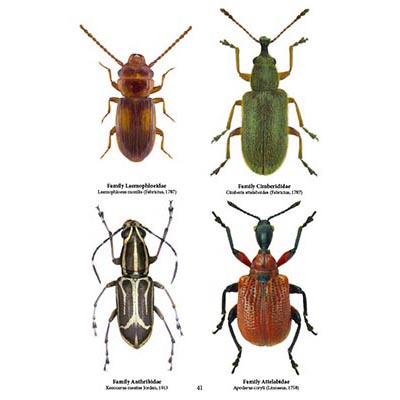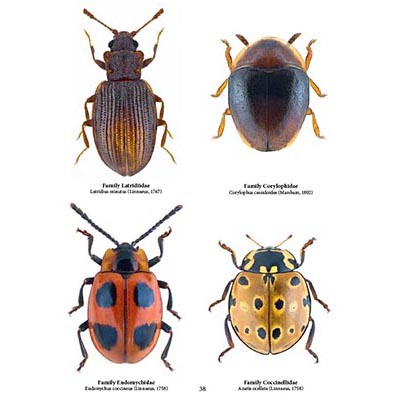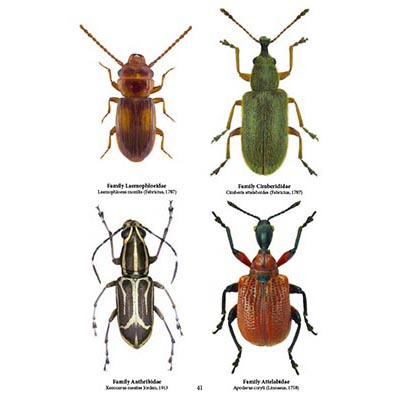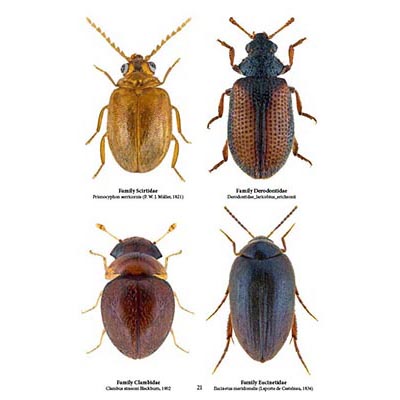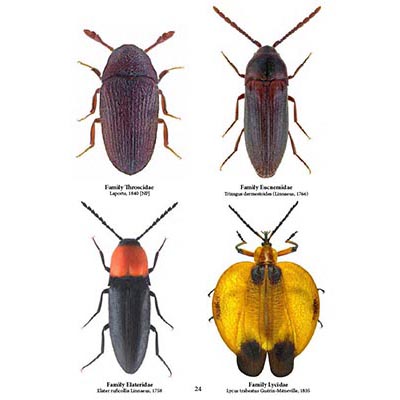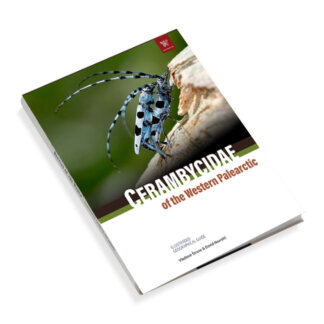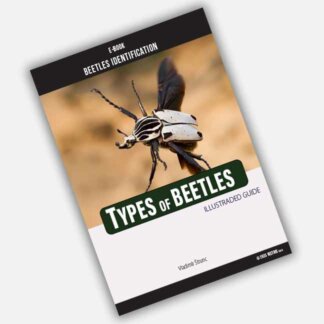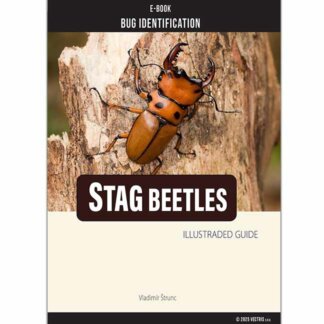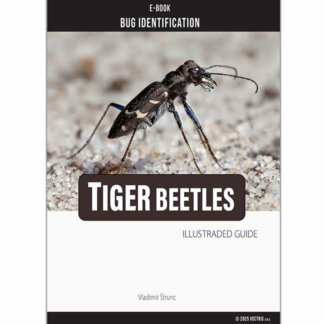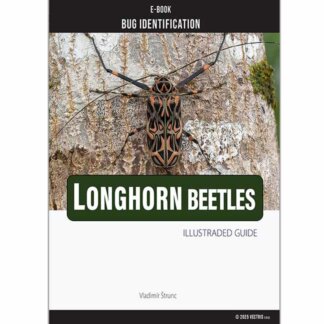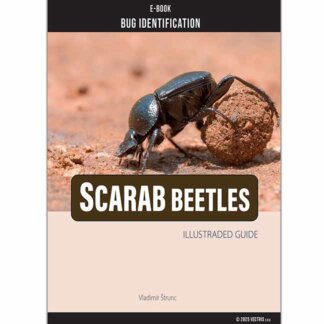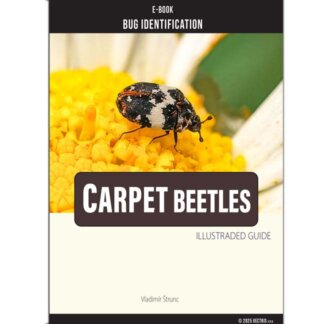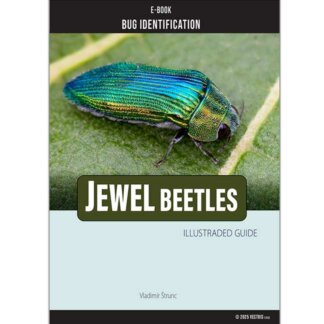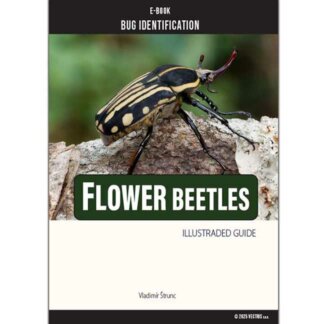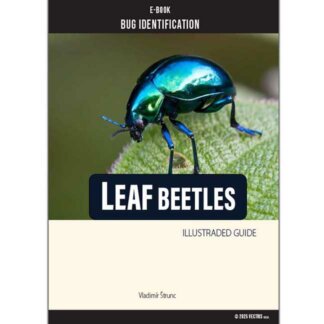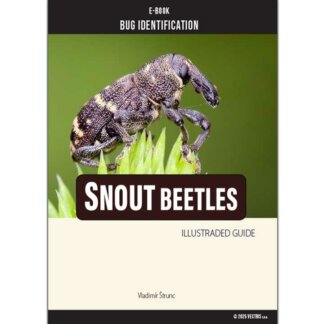Unique atlases with photos. List of family Coleoptera
Book novelties:
Prioninae of the World I., Cerambycidae of the Western Paleartic I. June Bugs,
Types of beetles insects
New E-Book: Ground Beetles, Tiger Beetles, Longhorn Beetles, Jewel Beetles, Stag Beetles, Carpet Beetles, Scarab Beetles, Rhinoceros Beetles, Weevil Beetles, Blister Beetles, Leaf Beetles, Flower Beetles,
Start Shopping, Start Saving – prices from $3 USD

Books about Beetles
Unique pictorial atlases for identifying Beetles:
(2020) Tiger Beetles of the World, Cicindelidae, Illustrated guide to the genera
(2023) Tiger Beetles of Africa, Cicindelidae, Geographical guide to the family Cicindelidae
(2024) Tiger Beetles of Orient, Cicindelidae, Geographical guide to the family Cicindelidae
(2022) Ground Beetles of Africa, Afrotropical Region
(2022) Jewel Beetles of the World, Buprestidae, Illustrated guide to the Superfamily Buprestoidea
(2008) The Prionids of the World, Prioninae, Illustrated catalogue of the Beetles
(2010) The Prionids of the Neotropical region, Prioninae, Illustrated catalogue of the Beetles
-
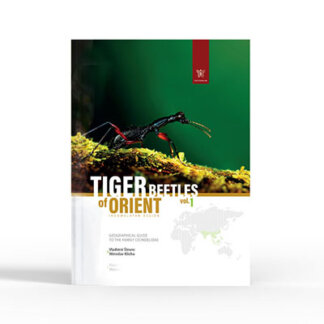 Tiger Beetles of Orient€ 129.00
Tiger Beetles of Orient€ 129.00 -
 Tiger Beetles of Africa€ 129.00
Tiger Beetles of Africa€ 129.00 -
 The Prionids of the WorldProduct on sale€ 59.00
The Prionids of the WorldProduct on sale€ 59.00 -
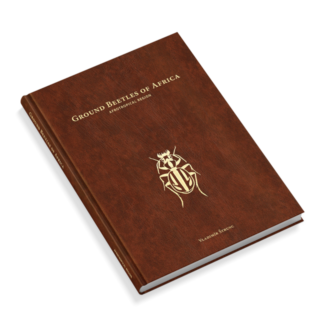 Ground Beetles of Africa (2nd edition)€ 136.00
Ground Beetles of Africa (2nd edition)€ 136.00 -
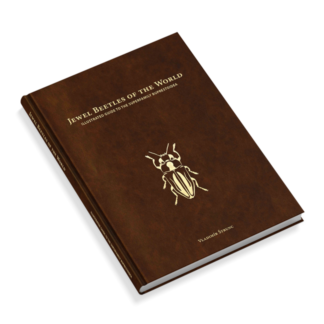 Jewel Beetles of the World€ 105.00
Jewel Beetles of the World€ 105.00 -
 Tiger Beetles of the World€ 109.00
Tiger Beetles of the World€ 109.00 -
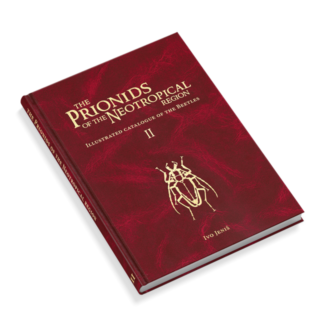 The Prionids of the Neotropical regionProduct on sale€ 59.00
The Prionids of the Neotropical regionProduct on sale€ 59.00
We recommend:
jeweled beetles, ground beetles, longhorn beetles, goliath beetle, stag beetle, carpet beetles
Here are some interesting facts about the beetle families you’ve listed:
Haliplidae
Crawling Water Beetles: These small beetles are primarily found in lentic habitats rich in algae, which they feed on. They are easily recognized by their enlarged hind coxal plates.
Distribution: Found in various parts of the world, including eastern Canada, where there are 23 known species.
Gyrinidae
Whirligig Beetles: Known for their unique ability to swim on the surface of water in a circular motion. They have compound eyes divided into two parts, allowing them to see both above and below the water surface.
Ecological Role: They are predators that feed on other small aquatic insects.
Noteridae
Burrowing Water Beetles: These beetles are adapted to life underwater and are known for their burrowing behavior in aquatic sediments.
Distribution: Found worldwide, with a notable presence in regions like Madagascar, where many species are endemic.
Meruidae
Meruidae is a small family of aquatic beetles, but there is limited information available about this group. They are generally associated with water environments.
Aspidytidae
Aspidytidae is a recently recognized family of aquatic beetles. They are known for their unique characteristics and are found in aquatic environments.
Amphizoidae
Trout-Stream Beetles: These beetles are adapted to fast-moving water environments, such as streams. They are primarily found in North America.
Ecological Role: They are part of the aquatic food chain, serving as both predators and prey.
Hygrobiidae
Skeletoot Water Beetles: These beetles are known for their distinctive skeletal appearance. They are found in aquatic environments and are part of the water beetle diversity.
Distribution: Found in various regions, including Galicia, Spain, where they contribute to the local water beetle fauna.
Dytiscidae
Predaceous Diving Beetles: These beetles are known for their ability to dive and swim underwater. They are predators that feed on other aquatic organisms.
Ecological Role: Important in controlling aquatic insect populations.
Trachypachidae
False Ground Beetles: These beetles resemble ground beetles but are actually aquatic. They are found in fast-moving water environments.
Distribution: Limited to certain regions, including North America.
Cicindelidae
Tiger Beetles: Known for their speed and bright colors. They are predators that feed on other insects.
Ecological Role: Important in controlling insect populations in various ecosystems.
Carabidae
Ground Beetles: One of the largest families of beetles, with a wide range of species. They are generally terrestrial but can be found in various habitats.
Ecological Role: Many species are predators that help control pest populations.
Crowsoniellidae
Crowsoniellidae is a small family of beetles, but there is limited information available about this group.
Cupedidae
Retreated-Horned Beetles: These beetles are known for their distinctive horn-like protrusions. They are generally found in wood and are part of the ancient beetle lineages.
Micromalthidae
Telephone Pole Beetles: Known for their unique life cycle, which involves a complex social structure. They are found in decaying wood.
Ommatidae
Archaeognatha-like Beetles: These beetles have primitive characteristics and are often found in wood or soil environments.
Lepiceridae
Lepiceridae is a small family of aquatic beetles, but there is limited information available about this group.
Torridincolidae
Torrent Beetles: These beetles are adapted to fast-moving water environments, such as streams and rivers.
Ecological Role: Part of the aquatic food chain in these environments.
Hydroscaphidae
Skiff Beetles: These beetles are found in fast-moving water environments and are known for their unique body shape.
Sphaeriusidae
Minute Moss Beetles: These beetles are very small and are often found in moist environments, such as moss.
Decliniidae
Decliniidae is a small family of beetles, but there is limited information available about this group.
Scirtidae
Marsh Beetles: These beetles are found in aquatic environments, particularly in marshes and wetlands.
Ecological Role: Part of the aquatic food chain.
Derodontidae
Wedge-Shaped Beetles: These beetles are known for their distinctive wedge-shaped bodies. They are generally found in decaying wood.
Clambidae
Minute Beetles: These beetles are very small and are often found in decaying organic matter.
Eucinetidae
Plate-Thigh Beetles: These beetles are known for their distinctive plate-like structures on their thighs. They are generally found in decaying wood.
Rhinorhipidae
Rhinorhipidae is a small family of beetles, but there is limited information available about this group.
Dascillidae
Soft Bodied Plant Beetles: These beetles are known for their soft bodies and are often found in plant environments.
Rhipiceridae
Cicada Parasite Beetles: These beetles are parasitic and are known for their unique life cycle involving cicadas.
Byrrhidae
Pill Beetles: These beetles are known for their ability to roll into a ball for defense. They are generally found in moist environments.
Schizopodidae
Schizopodidae is a small family of beetles, but there is limited information available about this group.
Buprestidae
Jewel Beetles: Known for their bright colors and metallic sheen. They are generally found in wood and are part of the wood-boring beetle families.
Lutrochidae
Travertine Beetles: These beetles are found in fast-moving water environments, such as streams and rivers.
Dryopidae
Long-Toed Water Beetles: These beetles are adapted to aquatic environments and are known for their long toes.
Eulichadidae
Forest Stream Beetles: These beetles are found in forest streams and are part of the aquatic beetle diversity.
Callirhipidae
Callirhipid Beetles: These beetles are known for their distinctive body shape and are generally found in wood environments.
Ptilodactylidae
Toad-Like Beetles: These beetles are known for their unique body shape resembling toads. They are generally found in aquatic environments.
Cneoglossidae
Cneoglossidae is a small family of beetles, but there is limited information available about this group.
Chelonariidae
Chelonariid Beetles: These beetles are known for their unique body shape and are generally found in aquatic environments.
Psephenidae
Water Penny Beetles: These beetles are found in aquatic environments and are known for their flat, penny-like bodies.
Protelmidae
Protelmidae is a small family of beetles, but there is limited information available about this group.
Elmidae
Riffle Beetles: These beetles are adapted to fast-moving water environments, such as streams and rivers.
Ecological Role: Part of the aquatic food chain.
Limnichidae
Marsh-Loving Beetles: These beetles are found in aquatic environments, particularly in marshes and wetlands.
Heteroceridae
Variegated Mud-Loving Beetles: These beetles are known for their distinctive color patterns and are generally found in muddy environments.
Artematopodidae
Soft-Winged Flower Beetles: These beetles are known for their soft bodies and are often found in plant environments.
Omethidae
False Fireflies: These beetles are known for their ability to mimic fireflies. They are generally found in plant environments.
Brachypsectridae
Texas Beetles: These beetles are known for their unique body shape and are generally found in Texas, USA.
Throscidae
False Click Beetles: These beetles are known for their ability to mimic click beetles. They are generally found in plant environments.
Eucnemidae
False Click Beetles: These beetles are known for their distinctive body shape and are generally found in wood environments.
Cerophytidae
Rare Click Beetles: These beetles are known for their unique life cycle and are generally found in plant environments.
Jurasaidae
Jurasaidae is a small family of beetles, but there is limited information available about this group.
Elateridae
Click Beetles: Known for their ability to click and flip themselves over when threatened. They are generally found in various environments.
Sinopyrophoridae
Sinopyrophoridae is a small family of beetles, but there is limited information available about this group.
Lycidae
Net-Winged Beetles: These beetles are known for their distinctive net-like wing patterns. They are generally found in plant environments.
Iberobaeniidae
Iberobaeniidae is a small family of beetles, but there is limited information available about this group.
Phengodidae
Glowworm Beetles: These beetles are known for their bioluminescent abilities. They are generally found in plant environments.
Rhagophthalmidae
Rhagophthalmidae is a small family of beetles, but there is limited information available about this group.
Lampyridae
Fireflies: Known for their bioluminescent abilities. They are generally found in plant environments and are important for their ecological role.
Cantharidae
Soldier Beetles: These beetles are known for their bright colors and are generally found in plant environments.
Nosodendridae
Wounded-Tree Beetles: These beetles are known for their unique life cycle involving wounded trees. They are generally found in wood environments.
Synteliidae
Synteliidae is a small family of beetles, but there is limited information available about this group.
Sphaeritidae
Round Fungus Beetles: These beetles are known for their round bodies and are generally found in fungal environments.
Histeridae
Clown Beetles: These beetles are known for their distinctive body shape and are generally found in decaying organic matter.
Hydrophilidae
Water Scavenger Beetles: These beetles are found in aquatic environments and are known for their scavenging behavior.
Helophoridae
Creek Beetles: These beetles are adapted to aquatic environments, particularly in creeks and streams.
Epimetopidae
Epimetopidae is a small family of aquatic beetles, but there is limited information available about this group.
Georissidae
Minute Moss Beetles: These beetles are very small and are often found in moist environments, such as moss.
Hydrochidae
Scoop-Beaked Beetles: These beetles are known for their distinctive beak-like mouthparts. They are generally found in aquatic environments.
Spercheidae
Spercheidae is a small family of aquatic beetles, but there is limited information available about this group.
Lucanidae
Stag Beetles: Known for their distinctive antler-like mandibles. They are generally found in wood environments.
Trogidae
Hide Beetles: These beetles are known for their ability to feed on animal hides. They are generally found in decaying organic matter.
Glaresidae
Enigmatic Scarab Beetles: These beetles are known for their unique body shape and are generally found in soil environments.
Pleocomidae
Rain Beetles: These beetles are known for their unique life cycle involving rainfall. They are generally found in soil environments.
Bolboceratidae
Earth-Boring Beetles: These beetles are known for their ability to burrow into soil. They are generally found in soil environments.
Diphyllostomatidae
False Stag Beetles: These beetles are known for their distinctive body shape and are generally found in wood environments.
Geotrupidae
Earth-Boring Beetles: These beetles are known for their ability to burrow into soil. They are generally found in soil environments.
Passalidae
Bess Beetles: These beetles are known for their unique social behavior. They are generally found in decaying wood.
Belohinidae
Belohinidae is a small family of beetles, but there is limited information available about this group.
Ochodaeidae
Sand-Loving Scarab Beetles: These beetles are known for their ability to live in sandy environments. They are generally found in soil environments.
Glaphyridae
Bumble Bee Scarab Beetles: These beetles are known for their distinctive body shape and are generally found in soil environments.
Hybosoridae
Scavenger Beetles: These beetles are known for their scavenging behavior and are generally found in decaying organic matter.
Scarabaeidae
Scarab Beetles: Known for their distinctive body shape and are generally found in various environments, including soil and dung.
Jacobsoniidae
Jacobsoniidae is a small family of beetles, but there is limited information available about this group.
Ptiliidae
Feather-Winged Beetles: These beetles are known for their extremely small size and delicate wings. They are generally found in decaying organic matter.
Hydraenidae
Minute Moss Beetles: These beetles are very small and are often found in moist environments, such as moss.
Colonidae
Colonidae is a small family of beetles, but there is limited information available about this group.
Agyrtidae
Primitive Carrion Beetles: These beetles are known for their primitive characteristics and are generally found in decaying organic matter.
Leiodidae
Round Fungus Beetles: These beetles are known for their round bodies and are generally found in fungal environments.
Staphylinidae
Rove Beetles: One of the largest families of beetles, with a wide range of species. They are generally found in various environments and are known for their ecological roles.
Dermestidae
Carpet Beetles: These beetles are known for their ability to feed on carpets and other textiles. They are generally found in decaying organic matter.
Bostrichidae
Auger Beetles: These beetles are known for their ability to bore into wood. They are generally found in wood environments.
Ptinidae
Spider Beetles: These beetles are known for their distinctive body shape and are generally found in decaying organic matter.
Rentoniidae
Rentoniidae is a small family of beetles, but there is limited information available about this group.
Byturidae
Fruitworm Beetles: These beetles are known for their ability to feed on fruits. They are generally found in plant environments.
Biphyllidae
False Skin Beetles: These beetles are known for their distinctive body shape and are generally found in decaying organic matter.
Acanthocnemidae
Acanthocnemidae is a small family of beetles, but there is limited information available about this group.
Protopeltidae
Protopeltidae is a small family of beetles, but there is limited information available about this group.
Peltidae
Peltidae is a small family of beetles, but there is limited information available about this group.
Lophocateridae
Lophocateridae is a small family of beetles, but there is limited information available about this group.
Trogossitidae
Bark-Gnawing Beetles: These beetles are known for their ability to feed on bark. They are generally found in wood environments.
Thymalidae
Thymalidae is a small family of beetles, but there is limited information available about this group.
Phycosecidae
Phycosecidae is a small family of beetles, but there is limited information available about this group.
Prionoceridae
Prionoceridae is a small family of beetles, but there is limited information available about this group.
Mauroniscidae
Mauroniscidae is a small family of beetles, but there is limited information available about this group.
Rhadalidae
Rhadalidae is a small family of beetles, but there is limited information available about this group.
Melyridae
Soft-Winged Flower Beetles: These beetles are known for their soft bodies and are often found in plant environments.
Phloiophilidae
Phloiophilidae is a small family of beetles, but there is limited information available about this group.
Chaetosomatidae
Chaetosomatidae is a small family of beetles, but there is limited information available about this group.
Thanerocleridae
Checkered Beetles: These beetles are known for their distinctive checkered patterns. They are generally found in plant environments.
List of family Coleoptera
Haliplidae
Gyrinidae
Noteridae
Meruidae
Aspidytidae
Amphizoidae
Hygrobiidae
Dytiscidae
Trachypachidae
Cicindelidae
Carabidae
Crowsoniellidae
Cupedidae
Micromalthidae
Ommatidae
Lepiceridae
Torridincolidae
Hydroscaphidae
Sphaeriusidae
Decliniidae
Scirtidae
Derodontidae
Clambidae
Eucinetidae
Rhinorhipidae
Dascillidae
Rhipiceridae
Byrrhidae
Schizopodidae
Buprestidae
Lutrochidae
Dryopidae
Eulichadidae
Callirhipidae
Ptilodactylidae
Cneoglossidae
Chelonariidae
Psephenidae
Protelmidae
Elmidae
Limnichidae
Heteroceridae
Artematopodidae
Omethidae
Brachypsectridae
Throscidae
Eucnemidae
Cerophytidae
Jurasaidae
Elateridae
Sinopyrophoridae
Lycidae
Iberobaeniidae
Phengodidae
Rhagophthalmidae
Lampyridae
Cantharidae
Nosodendridae
Synteliidae
Sphaeritidae
Histeridae
Hydrophilidae
Helophoridae
Epimetopidae
Georissidae
Hydrochidae
Spercheidae
Lucanidae
Trogidae
Glaresidae
Pleocomidae
Bolboceratidae
Diphyllostomatidae
Geotrupidae
Passalidae
Belohinidae
Ochodaeidae
Glaphyridae
Hybosoridae
Scarabaeidae
Jacobsoniidae
Ptiliidae
Hydraenidae
Colonidae
Agyrtidae
Leiodidae
Staphylinidae
Dermestidae
Bostrichidae
Ptinidae
Rentoniidae
Byturidae
Biphyllidae
Acanthocnemidae
Protopeltidae
Peltidae
Lophocateridae
Trogossitidae
Thymalidae
Phycosecidae
Prionoceridae
Mauroniscidae
Rhadalidae
Melyridae
Phloiophilidae
Chaetosomatidae
Thanerocleridae
Cleridae
Lymexylidae
Ripiphoridae
Mordellidae
Aderidae
Ischaliidae
Trictenotomidae
Scraptiidae
Mycteridae
Oedemeridae
Boridae
Pythidae
Salpingidae
Pyrochroidae
Anthicidae
Meloidae
Stenotrachelidae
Tetratomidae
Melandryidae
Synchroidae
Prostomidae
Ciidae
Ulodidae
Archeocrypticidae
Pterogeniidae
Mycetophagidae
Tenebrionidae
Zopheridae
Promecheilidae
Chalcodryidae
Lagrioididae
Bothrideridae
Cerylonidae
Murmidiidae
Discolomatidae
Euxestidae
Teredidae
Alexiidae
Akalyptoischiidae
Latridiidae
Anamorphidae
Corylophidae
Endomychidae
Mycetaeidae
Cerasommatidiidae
Eupsilobiidae
Coccinellidae
Boganiidae
Erotylidae
Helotidae
Sphindidae
Protocucujidae
Monotomidae
Kateretidae
Nitidulidae
Smicripidae
Hobartiidae
Cryptophagidae
Silvanidae
Cucujidae
Phloeostichidae
Agapythidae
Priasilphidae
Cavognathidae
Lamingtoniidae
Tasmosalpingidae
Cyclaxyridae
Passandridae
Myraboliidae
Phalacridae
Laemophloeidae
Cimberididae
Nemonychidae
Anthribidae
Belidae
Attelabidae
Caridae
Brentidae
Curculionidae
Oxypeltidae
Vesperidae
Disteniidae
Cerambycidae
Megalopodidae
Orsodacnidae
Chrysomelidae
Book about Beetles
Books about Beetles
